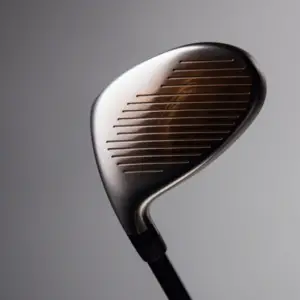Last Updated on October 19, 2023
Building your own golf clubs is a rewarding and creative experience. It allows the golfer to customize their entire set of clubs, creating a distinct advantage on the course. With proper equipment, knowledge, and technique, anyone can build quality golf clubs in their home workshop. In today’s article, you’ll learn how to build your own golf clubs and get some tips for achieving optimal performance from your custom setup.
Choosing The Right Materials
Golf club materials are a key factor to consider when building your own golf clubs. Club head materials, such as titanium and stainless steel, should be chosen based on the desired characteristics of performance, weight and durability. The design of the material used for the shaft must also be taken into consideration due to its influence on potential swing speed and ball control. Golf grip materials provide comfort while holding the club.
Options include rubber grips or leather wraps that can improve the absorption of moisture in wet conditions and reduce vibration during impact with the ball. It is important to research all available options before selecting a material that best suits individual preferences. Ultimately, choosing quality components will ensure long-term satisfaction when playing with custom built clubs.
Tools Needed For Building Clubs

Having chosen the right materials for your golf clubs, it is now time to identify and acquire the necessary tools needed for building them. Many of these items are simple and can be found in any home tool kit, such as a measuring tape, ruler, screwdriver, hammer and saw. Additional club-building supplies may include various types of clamps, a drill press or hand drill with bits designed for cutting metal, wrenches and various sanding tools.
For those more serious about making their own clubs, there are many specialty golf-building tools available from retailers that specialize in clubmaking equipment. These items range from heaters used to adjust shafts to jigs specifically designed for bending iron heads, along with numerous other devices designed to aid in the construction process. When choosing between purchasing general purpose versus specialized tool sets consider which type will best help you build high-quality clubs with minimal effort.
Preparing The Club Head
Clubhead preparation is an important step in building golf clubs. When preparing the club head, it is necessary to consider both shaping and selection. Shaping involves cutting down a block of metal or other material into the desired shape for the club head. A variety of tools can be used during this process, including files, saws, drills, and milling machines.
In addition to shaping the clubhead, careful consideration must also be given to selecting materials that will provide good performance characteristics. Popular materials include titanium alloys, stainless steel alloys, brass, copper-beryllium alloy, and aluminium alloys. Each material has its own unique properties, which should be taken into account when making a decision about what type of material to use. Once the shape and material have been chosen, any additional features, such as grooves or coatings, may then be added before finishing off with the assembly of the components that make up the completed club head.
Crafting The Shaft And Grip

After the golf club head is prepared, crafting the shaft and grip can begin. The shaft material of a golf club should be light and resilient. Graphite is often used for lighter weights but is still strong enough to withstand swings with power. Steel can also be used as it holds up well during use and adds more weight for improved control when making contact with the ball. Upon selecting the appropriate materials, it is important to consider how much length needs to be cut from the shaft in order to provide proper balance and performance. A specialized cutting tool must be used to ensure accurate results that will lead to an overall successful design.
When crafting a custom grip, many different types of gripping materials are available on today’s market, such as rubber or corded grips, which come in various sizes depending on individual preference and desired feel while swinging. It would be beneficial to test out several options before settling on one since this feature has been known to influence swing accuracy significantly over time due to comfort level when holding onto the handle of the club throughout the play. Ultimately, finding a balance between quality components and cost efficiency will produce optimal outcomes when constructing your own set of clubs.
Assembling The Parts
Once golfers have collected the necessary components, they can begin assembling their own clubs. First, the shaft and clubhead should be connected. The butt end of the shaft is inserted into a hole at the top of the head. Then, it is secured with epoxy or double-sided tape so that it will not come loose during use. Next, any additional components, such as weights, must also be attached to the head.
Afterwards, grips are put on using a solvent or double-sided tape and secured by winding adhesive grip tape around them in a spiral pattern until they fit snuggly over the shaft. This process requires precise measurements in order for the completed product to meet industry standards. Once all parts are assembled correctly, golfers may test out their new clubs before heading out onto the course and honing their skills further.
Finishing Touches
Once the golf club has been assembled, a polishing technique must be used to ensure that it is properly finished. This may involve using an abrasive pad or cloth to remove any remaining burrs or rough edges from components of the club. Additionally, this step can also help refine and customise the appearance of the golf club. For example, some individuals choose to refinish their clubs with paint or epoxy for added visual appeal.
Additionally, it is important to take care when cleaning and storing your newly constructed golf clubs. Be sure to use only water-based cleaners on them and store them in a dry place away from direct sunlight, as these can cause wear and tear over time. Finally, remember that you can always go back and make adjustments if needed – such as adding grip tape or changing out certain parts – depending on how comfortable you are with customizing your own golf clubs.
Conclusion
Golf clubs are an important part of the game, and having the right set can make a difference in performance. Understanding how often to replace them, what size is best for you, and whether it is better to buy off-the-shelf or custom built clubs can help golfers decide on their ideal club setup. Building your own golf clubs can be a cost-effective option if done properly, but without the correct knowledge, it could result in frustration instead of improvement.
To ensure success when building your own golf clubs, it is essential that you understand all facets of the process. Knowledge about shafts and heads, as well as grip styles and weights, should be taken into consideration before purchasing any components. Additionally, understanding proper assembly techniques will guarantee maximum benefit from each individual club. The cost associated with creating a set of custom clubs may vary depending on quality and quantity; however, this investment has the potential to pay off in improved performance over time.
Building your own golf clubs requires research and effort yet offers tremendous rewards in terms of playability and customization options. Knowing which materials suit you best, combined with sound assembly practices, ensures a positive outcome for anyone wishing to build their own set of golf clubs. With its potential benefits, such as increased accuracy due to tailor made specifications combined with affordability compared to prebuilt sets, building one’s own golf clubs becomes an attractive proposition for many aspiring players looking to take their game up a notch.


